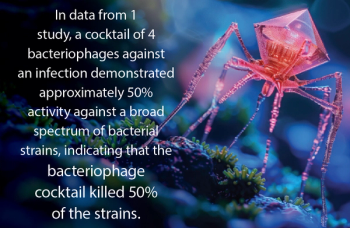
Using Behavioral Change Theories to Improve Infection Prevention and Control Best Practices
Investigators used 3 behavior models to study how to increase health care workers’ compliance with infection prevention and control practices.
A key strategy to improve infection prevention and control (IPC) practices is to use behavior change theories and has led investigators to identify best practices on how to translate evidence into everyday practice.
Although preventing health care–associated infections (HCAI) is vital in health care settings, compliance with IPC practices by health care providers is often low. A way to change health care workers’ behavior to increase adherence with IPC practices must be found. This change may require the introduction of new systems and processes or adapting something that is already in place.
To study this concept, a scoping review, published recently in
Eleven studies were identified that met the inclusion criteria. Nine studies explored barriers and facilitators to existing IPC practice, and 3 used their findings to design a behavior change intervention or tool. Three key domains were identified in all IPC behaviors: “beliefs about consequences,” “environmental context/resources,” and “social/professional role and identity.”
The data were compiled through surveys, focus groups, or interviews of health care workers in long-term care and hospitals. The questions revolved around environmental context and resources that included time pressure, workload, and environmental controls. The 3 focuses were hand hygiene, antimicrobial stewardship, and MRSA screening.
“The reviewed studies encompassed a range of settings and staff roles with most exploring perceived barriers and facilitators to existing IPC practices by health care staff,” the investigators said in the review. “This can help to explore determinants of engrained practice and identify potential interventions specific to the setting.”
In a significant study included in the review, the investigators reported, “Three-quarters of survey respondents (76%, 343/450) reported their compliance with MRSA screening procedures as > 90%, this was considered optimum compliance according to local standards. Logistic regression found 3 predictors for > 90% compliance: (1) screening as part of admission process (it was seen as easy to complete due to admission routine); (2) feedback regarding compliance levels to screening (staff were aware of their performance); and (3) clinical area (the influence of ward culture).”
The investigators note that a main limitation of the review was that the scope of the studies used was narrow and only focused on 3 IPC practices. Since relying on interviews was used in these studies, a more accurate picture of compliance would be compiled by using both staff interviews and observation of the health care workers. Although the results of this review showed that behavioral theories are helpful to explore educating health care workers and encourage better IPC practices, more research using behavior change theories is necessary.
Newsletter
Stay prepared and protected with Infection Control Today's newsletter, delivering essential updates, best practices, and expert insights for infection preventionists.





